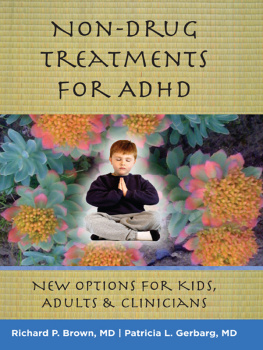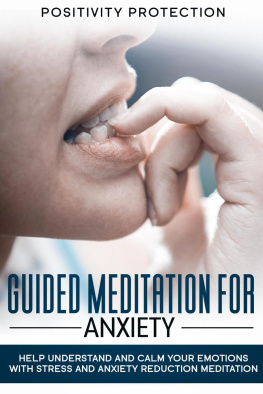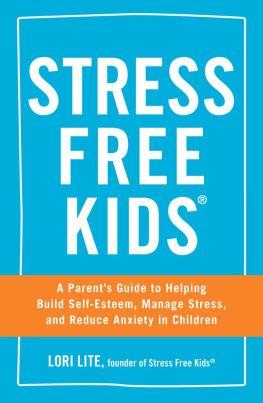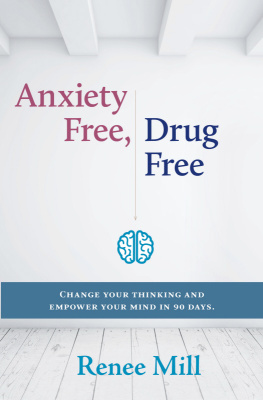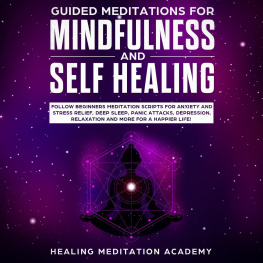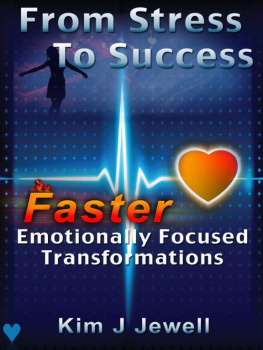A go-to source for information on integrative mental health.
Mehmet Oz, MD, author of YOU: The Owners Manual
This book is for everyone... an invaluable resource.
Townsend Letter
ABOUT THE BOOK
This book presents a range of simple breathing techniques that have been scientifically shown to be effective in alleviating common stress-related and mood problems, including anxiety, post-traumatic stress disorder, insomnia, and depression.
Drs. Brown and Gerbarg, psychiatrists at Columbia Medical School and New York Medical College, explain how breathing practices positively impact the brain, the stress response, and the communication pathways between the mind and the body. They present fourteen breathing techniques drawn from yoga, neurofeedback (brainwave biofeedback), and qi gong, for addressing specific stress and mood challenges. The included audio program guides readers through the techniques and helps them to make these breathing practices an ongoing part of their daily lives.
RICHARD P. BROWN, MD, Associate Clinical Professor of Psychiatry at Columbia University, is an expert in the use of complementary and integrative treatments for mental health conditions including depression, anxiety, ADD, and PTSD. His Breath-Body-Mind workshop combines breath and movement practices derived from yoga, qi gong, Coherent Breathing, and Open-Focus meditation. These workshops also help victims recover from mass disasters.
A graduate of Harvard Medical School, PATRICIA L. GERBARG, MD, is Assistant Clinical Professor of Psychiatry at New York Medical College and maintains a private practice, and facilitates research on mind-body treatments for anxiety, PTSD, and stress-related medical conditions. She has lectured on integrative treatments in psychiatry at the American Psychiatric Association, and other professional conferences.
Sign up to learn more about our books and receive special offers from Shambhala Publications.

Or visit us online to sign up at shambhala.com/eshambhala.

Note to the reader: This book and audio program are not intended as substitutes for medical advice or treatment.
Shambhala Publications, Inc.
Horticultural Hall
300 Massachusetts Avenue
Boston, Massachusetts 02115
www.shambhala.com
2012 by Richard P. Brown, MD, and Patricia Gerbarg, MD
Cover design by Jim Zaccaria
All rights reserved. No part of this book may be reproduced in any form or by any means, electronic or mechanical, including photocopying, recording, or by any information storage and retrieval system, without permission in writing from the publisher.
Library of Congress Cataloging-in-Publication Data
Brown, Richard P.
The healing power of the breath: simple techniques to reduce stress and anxiety, enhance concentration, and balance your emotions / Richard Brown, Patricia Gerbarg.
p. cm.
eISBN 978-0-8348-2791-2
ISBN 978-1-59030-902-5 (PBK.)
1. Breathing exercisesTherapeutic use. 2. Mind and body. 3. Health. I. Gerbarg, Patricia L. II. Title.
RA782.B76 2012
613.192dc23
2011042585
Contents
The Healing Power of Breath
May suffering ones be suffer-free.
May the fearstruck fearless be.
May the grieving shed all grief.
May all beings find relief.
Venerable U Vimalaramsi
T hroughout history, great healers have discovered the power of breathing to enhance the physical, mental, and spiritual well-being of their people. Once secret and sacred, breath practices are now available to everyone. We invite you on a journey through our book and the Healing Power of the Breath audio program to learn simple, natural methods to become calmer, overcome stress, boost energy, focus your mind, enhance physical fitness, sleep peacefully, and feel closer to those you love. We will teach you core breathing techniques, explain how they work, and show you how to use them to meet the many challenges you face.
The human body has the power to heal itself from the cellular level up. We regenerate our body tissues every day. Before the advent of synthetic medications, shamans, monks, priests, and tribal leaders learned how to turn on the bodys natural abilities to prevent and cure illness. Breathing practice (pranayama) is one of the classical limbs of yoga and can be found in modern yoga studios all around the world. While yoga practitioners and martial artists employ breath techniques, the modern science of breath is exploring the vast healing potential of the human respiratory system.
Studies are revealing that by changing the patterns of breathing it is possible to restore balance to stress response systems, calm an agitated mind, relieve symptoms of anxiety and post-traumatic stress disorder (PTSD), improve physical health and endurance, elevate performance, and enhance relationships. The scientific bases for such powerful effects of breathing practices will be presented as we show how to use them in many aspects of your daily life.
What do Mahatma Gandhi, the martial artist Bruce Lee, Buddhist meditators, Christian monks, Hawaiian kahunas, and Russian Special Forces have in common? They all used breathing to enhance their physical, mental, and spiritual well-being. For instance, Mahatma Gandhi, who embodied the principles of righteous action and nonviolence, enjoyed chanting his prayers every morning. The demands he faced in leading the people of India by peaceful resistance through their struggle for independence from the British were certainly on a larger scale than most of our own day-to-day stresses. Just as chanting helped Gandhi guide his people through dangerous times, it can help keep your stress-response systems in balance through whatever challenges you face. When the famous martial artist and actor Bruce Lee bellowed before delivering a lethal blow, he was not just making noise to terrify his opponent. The great breath behind the shout sharpened his senses and primed his body for the strike. A practice we call Breath Moving was highly developed by medieval Russian Orthodox Christian monks who used it prior to reciting the Jesus Prayer and to attain higher spiritual states. These monks shared their breath secrets to fortify the holy Christian knights who were defending Russia from waves of invaders, and traces of their practices can be found in the training of todays Russian Special Forces. Knowledge of breath practices was also passed down through generations of great kahunas in the mountains of Hawaii; Hawaiian breath techniques of the present day are similar in many ways to those found in India and China.
The presence of related ancient breath forms in so many different areas of the world suggests that their roots must go back in time, perhaps ten thousand years or more. For example, slow breathing at rates of five to six breaths per minute are found in yoga, qigong, and Buddhist meditation.
This book will introduce you to knowledge and modern research on stress reduction through breathwork that is just as relevant to health in modern life as it was in ancient times. The stresses of modern life induce negative emotions such as anxiety, frustration, anger, and cynicism. In addition, stress accelerates the decline in physical health due to cardiovascular disease, obesity, inflammation, and immune dysfunction. The daily use of breath practices can turn back the tide of stress, counteract disease progression, and improve overall quality of life. Along with its physical toll, stress is also wearing on the spirit: it can lead to the buildup of emotional defenses that choke off our capacity for love, compassion, and intimacy. Breath practices combined with self-reflection can unlock the metal casing around the heart, enabling reconnection with loving feelings and positive emotions within ourselves and in our relationships.
Next page

